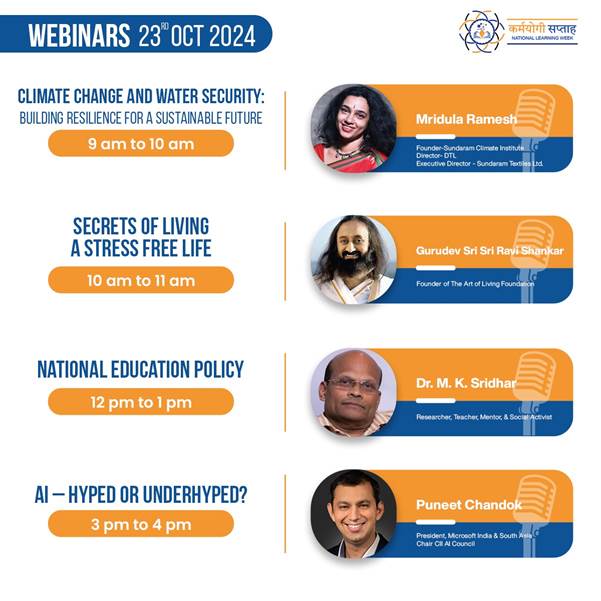Musaned Digital Platform

- 19 Oct 2024
In News:
Saudi Arabia Launches Musaned Digital Platform to Ensure Wage Protection for Foreign Workers.
Key Highlights:
- Purpose of Musaned:
- Musaned is a digital platform launched by Saudi Arabia to ensure wage protection and improve working conditions for foreign workers, particularly those in domestic (household) employment.
- The platform aims to safeguard workers' rights, create a stable working environment, and reduce illegal immigration.
- Coverage:
- The platform benefits foreign workers from 10 African countries (including Sudan, Ethiopia, Kenya) and 9 Asian countries (including India, Bangladesh, Pakistan, Vietnam, the Philippines, and Sri Lanka).
- Key Features:
- Employment Contract Access: Workers can check and track their employment contracts and receive updates via the Musaned labour app.
- Financial Transaction Tracking: The platform monitors financial transactions between employers and foreign workers, ensuring employers meet their contractual obligations.
- Integration with Benefits: Musaned can be linked to contract insurance and health benefits, providing additional protection for workers.
- Objectives:
- Wage Protection: Ensures timely and fair wages for foreign workers.
- Human Rights Protection: Promotes human rights by holding employers accountable for fulfilling their obligations.
- Vision 2030 Alignment: Supports Saudi Arabia’s Vision 2030 by improving the work environment and contributing to legal labor migration.
- Impact:
- The platform is expected to help secure workers’ rights, especially for domestic workers, and provide a more transparent, accountable framework for employment relations in the country.
Musaned is a significant step by Saudi Arabia to enhance the security and welfare of foreign workers, aligning with the Kingdom's broader goals of economic reform and social development under Vision 2030. The platform will provide greater transparency, protect workers’ rights, and contribute to a more regulated and sustainable labor market.
National Green Hydrogen Mission

- 19 Oct 2024
In News:
- The Union Government has sanctioned three pilot projects under the National Green Hydrogen Mission to explore the use of green hydrogen in steel production.
- The initiative aims to demonstrate safe and efficient hydrogen-based steelmaking processes, validate their technical feasibility, and evaluate economic viability for low-carbon steel production.
- Objectives of the Scheme:
- Identify and test advanced technologies for utilizing green hydrogen in the steel sector.
- Demonstrate safe and secure operation of hydrogen-based steel production.
- Validate technical and economic feasibility, contributing to decarbonization of iron and steel manufacturing.
- Pilot Project Components:
-
- 100% Hydrogen-based Direct Reduced Iron (DRI) using vertical shaft furnaces.
- Hydrogen use in Blast Furnace to reduce coal/coke consumption.
- Hydrogen injection in vertical shaft-based DRI units.
-
- Sanctioned Pilot Projects:
- Matrix Gas and Renewables Ltd
- Capacity: 50 tons per day (TPD).
- Consortium Partners: Gensol Engineering Ltd, IIT Bhubaneswar, Metsol AB (Sweden).
- Simplex Castings Ltd
- Capacity: 40 TPD.
- Consortium Partners: BSBK Pvt. Ltd., Ten Eight Investment, IIT Bhilai.
- Steel Authority of India Ltd (SAIL)
- Capacity: 3,200 TPD (Ranchi).
- Financial Support:
- Total Government Funding: ?347 crore for the three projects.
- These pilot projects are expected to be commissioned within the next three years and may serve as a blueprint for scaling up such technologies in India.
- About the National Green Hydrogen Mission:
- Launched: January 4, 2023.
- Total Budget: ?19,744 crore (up to FY 2029-30).
- Primary Goal: Establish India as a global hub for green hydrogen production and export while fostering decarbonization in sectors like steel, mobility, and energy.
- Key Features of the Mission:
- SIGHT (Strategic Interventions for Green Hydrogen Transition):
- Supports domestic manufacturing of electrolysers and promotes the production and use of green hydrogen.
- Expected Outcomes by 2030:
- Green Hydrogen Production: At least 5 million metric tons (MMT) annually.
- Renewable Energy: Addition of 125 GW in renewable energy capacity.
- Investment: Over ?8 lakh crore in green hydrogen technologies.
- Employment: Creation of 6 lakh jobs.
- Reduction in Fossil Fuel Imports: Savings of over ?1 lakh crore.
- GHG Emissions Reduction: Avoidance of nearly 50 MMT of annual greenhouse gas emissions.
- SIGHT (Strategic Interventions for Green Hydrogen Transition):
- Phase-wise Implementation:
- Phase I (2022-26): Focus on demand creation and initial deployment in existing hydrogen-using sectors (like steel and mobility).
- Phase II (2026-30): Expansion to new sectors with a push toward commercialization of green hydrogen.
The National Green Hydrogen Mission aims to significantly decarbonize India’s steel sector and other industries by leveraging hydrogen technology. With ?347 crore allocated for pilot projects in steelmaking, the initiative sets the stage for scalable, low-carbon steel production, contributing to India's clean energy transition and supporting its goal to become a global leader in green hydrogen.
Next Generation Missile Vessels (NGMV)

- 19 Oct 2024
In News:
GE’s LM2500 Marine Engines to Power Indian Navy’s Next Generation Missile Vessels (NGMV)
Key Highlights:
- Engine Selection:
- General Electric’s LM2500 marine gas turbines have been chosen to power the Indian Navy's Next Generation Missile Vessels (NGMV), currently being built by Cochin Shipyard Limited (CSL).
- Project Details:
- Number of Vessels: Six NGMVs are under construction.
- Contract Value: ?9,805 crore, awarded by the Defence Ministry.
- Delivery Schedule: The first deliveries are expected to commence in March 2027.
- Key Components and Suppliers:
- GE Aerospace will deliver six LM2500 engine kits to Hindustan Aeronautics Limited (HAL) for assembly and testing at their Industrial and Marine Gas Turbine Division in Bengaluru.
- GE will also supply the composite base, enclosure, and a full set of auxiliary systems for the gas turbines.
- LM2500 Marine Gas Turbine:
- The LM2500 turbine is known for its reliability and high power output, making it ideal for the NGMV mission.
- Top Speed: 35 knots (64 km/h).
- It is central to the propulsion system, meeting the stealth and power demands of the new missile vessels.
- Capabilities of NGMVs:
- Role: Designed for offensive missions, the NGMVs will be equipped for anti-surface warfare, maritime strike operations, and sea denial.
- Speed & Stealth: Capable of speeds up to 35 knots while maintaining stealth, these vessels will be difficult for enemy ships to detect.
- Weapons: They will carry a variety of anti-surface weapons, including the BrahMos supersonic cruise missile, loitering munitions, unmanned vehicles, and other guided weapons.
- Operational Roles:
- Offensive: The NGMVs will engage in attacking enemy warships, merchant ships, and land-based targets.
- Defensive: They will also be used for local naval defense operations, including the seaward defense of offshore development areas and defending choke points.
- Strategic Importance:
- The NGMVs will significantly enhance India’s maritime strike capability and provide a formidable presence in strategic sea routes, especially in regions like choke points and offshore development areas.
- Cochin Shipyard’s Role:
- After successfully constructing INS Vikrant, India’s first indigenous aircraft carrier, CSL is now focusing on the NGMV project, along with building anti-submarine warfare shallow water crafts for the Indian Navy, currently in various stages of construction.
- Partnerships:
- In 2023, GE Aerospace and HAL signed a Memorandum of Understanding (MoU) to expand their collaboration on marine gas turbines, including assembly, inspection, and testing (AIT) of the LM500 turbines.
- To date, GE Aerospace has delivered 24 marine gas turbine kits to HAL, supporting India’s Make-In-India initiative.
- Global Impact:
- The LM2500 gas turbine is used by 714 vessels globally, reinforcing its reputation for reliability and availability in critical maritime defense systems.
First Chief Minister of J&K UT Takes Charge

- 19 Oct 2024
In News:
Omar Abdullah sworn in as J&K CM; Surinder Kumar Choudhary is Deputy CM
Key Highlights:
- Omar Abdullah’s Political Context:
- This marks Omar Abdullah's second term as Chief Minister, after his tenure in 2009.
- He becomes the first Chief Minister of Jammu and Kashmir after the region’s special status was revoked and it was reorganized as a Union Territory in 2019.
- Challenges as CM of a Union Territory:
- Omar Abdullah acknowledged the unique challenges of serving as Chief Minister in a Union Territory and expressed hope that J&K’s Union Territory status would be temporary.
- Public Service and Security Measures:
- In his first official instructions, Abdullah asked the Director General of Police (DGP) to avoid creating “green corridors” or traffic halts during his movements. He also requested the minimization of sirens and aggressive security gestures, emphasizing minimal public inconvenience.
- Legal Context:
- Oath of Office: As per Article 164(3) of the Indian Constitution, the Chief Minister and other ministers are sworn in by the Governor or Lieutenant Governor in Union Territories.
- Abdullah is the first CM of the Union Territory of Jammu and Kashmir post the abrogation of Article 370 and the transition of J&K from a state to a Union Territory in 2019.
- Revocation of President's Rule:
- President’s Rule (under Article 356) was revoked following the election results, signaling the restoration of a functioning elected government after direct central governance in the region.
Karmayogi Saptah – National Learning Week

- 19 Oct 2024
In News:
Prime Minister Narendra Modi launched the ‘Karmayogi Saptah’ - National Learning Week on 19th October at Dr. Ambedkar International Centre, New Delhi.
Key Highlights:
- Context:
- The National Learning Week is a key event in the ongoing Mission Karmayogi initiative, aimed at building a civil service rooted in Indian ethos with a global outlook.
- Objective:
- To promote capacity building for civil servants through competency-linked learning.
- To align civil servants with national goals and foster a "One Government" approach.
- About National Learning Week (NLW):
- Largest learning event for civil servants, focused on individual and organizational growth.
- Encourages lifelong learning and continuous professional development.
- Provides fresh impetus to the Mission Karmayogi initiative, launched in September 2020, aimed at a future-ready, citizen-centric civil service.
- Learning Targets for Karmayogis:
- Each civil servant (Karmayogi) must complete at least 4 hours of competency-linked learning during the week.
- Learning opportunities include:
- Role-based modules on iGOT (Integrated Government Online Training platform).
- Webinars, public lectures, and policy masterclasses by prominent experts.
- Focus on improving skills for citizen-centric service delivery.
- Workshops & Seminars:
- Ministries, departments, and organizations organized domain-specific workshops and seminars.
- The goal is to enhance skills and knowledge, fostering better public service delivery.
- Outcomes:
- Strengthened alignment of civil servants with national priorities and goals.
- Enhanced individual competencies to better address citizen needs.
- A stronger commitment to continuous learning within the civil service.
